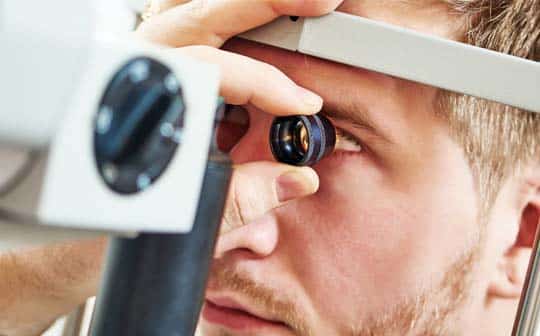Eye health is incredibly important. Eyes are two of the most complex organs that humans possess. Made up of a complex array of cells and components, our lens-based eyes can detect over ten million individual colours, focus in on objects over a 114-degree field of vision, and can repair themselves from light damage in as little as 48 hours.
Unlike other organs, our eyes are extraordinary in that they are one of the few parts the human body keeps ready for active use at all times. The way that the eye processes visual information for the brain via the ocular nerve is so complex that it is still not fully understood by medical science. One of the most exciting developments of the next century may be the successful surgical transplantation of a full eyeball, previously impossible due to the sheer complexity of reconstructing the optic nerve.
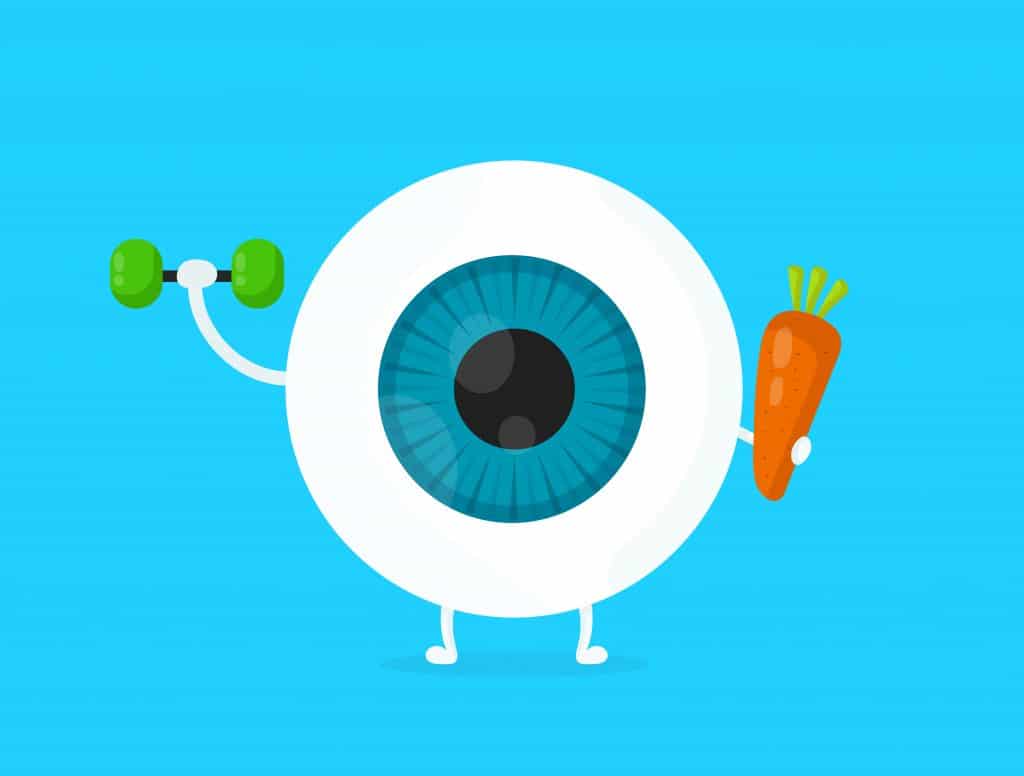
While our eyesight is unusually good when measured against many other species, our eyes can also be easily damaged as well. Problems tend to occur through illness or negligence. Excessive exposure to UV Rays and eye strain can easily cause decay or even permanent eye damage if left unchecked. It is estimated that over 80% of eye problems may be caused by avoidable behaviour on the part of patients. Increasing awareness of eye hazards is a key objective for doctors worldwide. Simple lifestyle changes such as wearing sunglasses can lead to a vast improvement in the patient’s quality of vision.
For more serious, underlying genetic conditions such as retinitis pigmentosa that cause degeneration and blindness, bionic replacements for our eyes may be used much more in the near future as ocular technology improves. However, some older technology is still widely used to treat eye degeneration and blindness. The basic principles behind cornea replacement have been known for more than a century.
However, it’s not just those with sight problems who may be booking appointments at the optometrist in the near future. New advancements in biotechnology and optics also mean that the future of eyesight may also involve biomedical enhancement or modification to perfectly healthy eyesight to improve our vision even further. Despite the precision of the human eye, we can only process the wavelengths of a small portion of the electromagnetic spectrum into colour and shape information. Could human eyes be fitted with true-colour digital or biomechanical sensors for ultraviolet wavelengths in a few decades time?
Below is a brief guide to how the eye works, some tips as the best ways to keep your eyes in top condition, and information about new vision innovation in biomedical science as well as developments in eye care technology. Alongside this, you’ll find a wealth of interesting eye facts and an eye health checklist.
Want To Find Out If You’re Suitable?
If you’re wondering whether laser eye treatment is the right choice for you, there are some key things to consider…
Basic information about your eyes
Each eye that you have is a complex photonic receptor. In plain terms, this means that it tells you what light is doing when it reflects off of the surfaces that you’re currently viewing. There are five main parts to every human eye that make this happen. The iris, cornea, pupil, retina, and supporting sclera perform most of the muscular actions you need to see.
Light passes through the cornea via the pupil, which changes size and shape within the core of the iris depending on how bright it is around you. The convex cornea refracts light into the hole in your inner eye, which is then processed by the retina into shapes and colours through an enormous array of cone and rod-shaped cells. The image then travels through the optic nerve to reach your brain. Your eyelids, eyelashes, and eyebrows keep the cornea free of dust and debris so that it can keep working properly. Blinking keeps the eye irrigated and lubricated so that it can move freely.
However, that isn’t the whole story. As all images that humans see are filtered through a convex lens, the brain ‘sees’ the raw image when it arrives upside down. The image is flipped in the mind to give you a true impression of what you’re actually seeing. The brain also produces a three-dimensional rendering of the world by overlaying the two images that arrive from your left and right eyes, which are two-dimensional. This allows humans to perceive depth and accurately judge how near or far objects and surfaces are to them.
For the most part, your eyes function happily without your conscious input. Like breathing, most of the processes needed to run the eyes are handled by neuron structures at the base of your brain close to the spinal column. As well as processing visual information, your eyes also set your internal body clock by registering light levels subconsciously. Uneven exposure to light levels can disrupt your sleep patterns. This can lead to conditions such as jet lag, under certain circumstances.
Our eyes are surprisingly durable considering their sophistication, sensitivity and need for constant lubrication to work properly. However, there are a number of ways in which your eyes can become degraded or damaged.
Macular degeneration is one of the most commonly cited problems. As you get older, the quality and clarity of your eyesight will naturally decline. A part of the retina called the macula that is responsible for fine vision will wear thin or become damaged by fluids such as blood. This can result in distorted, blurred, or imprecise vision. However, the rate at which macular and retinal degeneration occurs can be greatly influenced by choices made earlier in life. Some other health issues, such as obesity, are linked to poor eyesight through encouraging the development of conditions such as glaucoma and diabetic eye disease.
Top tips to keep your eyes healthy

There are many simple ways through which you can keep your eyes in good condition well into old age. For the most part, you won’t need any complicated eye technology. Common sense is the most important factor when it comes to maintaining healthy eyesight.
Unfiltered ultraviolet rays are one of the leading causes of eyesight decline. Unchecked, these rays can cause serious and lasting damage to the retina, even if they are absorbed ambiently. For this reason, you should always make sure to wear protective eyewear such as polarised sunglasses during the summer and on excessively sunny days. Many opticians and pharmacists will be able to advise you as to what you’ll need. You should also avoid staring directly at the sun for extended periods of time.
If you smoke, giving up could also greatly boost your chances of keeping your eyes healthy. Smoking has been linked to speeding up macular decay and increasing the risk of cataracts. You’ll also just improve your health generally if you quit, as smoking can cause extensive and permanent damage to your other internal organs. Your eyes are no exception.
Many eye problems and the general rate of decline in your eyesight stem from genetic causes, which may be hereditary. Take the time to speak to both your close relatives and your extended family. Have there been any cases in the past where a member of your family has seen a sudden decline in the quality of their vision? If so, you should keep a careful watch for any problems to catch them early with an eye appointment.
Being overweight has also been linked to poor eye health. Talk to your doctor or healthcare professional about options to reduce your weight if you’re concerned about the effect this could have on your eyesight. Diets rich in fruit, vegetables, vitamins and oily fish, and even more restricted diets like the keto diet, have been linked to improved eye health. They are a generally good option to keep fit for people of any weight or size.
If you’re going to be playing contact sports or working in dangerous industrial, scientific, or crafting environments, sturdy eye protection (such as goggles) will be essential. Dust or small pieces of metal can cause extensive damage to your cornea if you’re unlucky enough to collide with them while not wearing protection. Likewise, a strong impact while playing sport could be enough to detach a thin retina from its blood supply as well as cause more general cornea damage and scaring. If you’re near-sighted, you could be at particular risk.
If you read or work with computer screens a lot, make sure to take regular rest breaks to avoid eye strain. You should take a short break away from a point of intense focus at least every hour. Try looking around the room you’re working in at distant objects every 20 minutes to keep your eyes from becoming tired.
Lastly, make sure that any eyewear that you use stays clean and sterile. Germs can easily spread on glasses and contact lenses, which can cause common eye infections such as conjunctivitis. While you should be able to fight off most infections most of the time, they can be highly painful and unpleasant to deal with. You should also take care to wash your hands after handling any infectious surfaces, substances, or objects around the house or at work.
Your eye health checklist
- Wear protective eyewear
- Avoid staring at the sun directly for extended periods of time
- Consider giving up smoking
- Speak to your close relatives and extended family to see if eye problems and declining eyesight run in the family
- If overweight talk to your doctor or healthcare professional about options to reduce your weight
- Wear sturdy eye protection if you’re going to be playing contact sports or working in dangerous industrial, scientific, or crafting environments
- If you read or work with computer screens a lot, make sure to take regular rest breaks to avoid eye strain
- Make sure that any eyewear that you use stays clean and sterile
Interesting eye facts
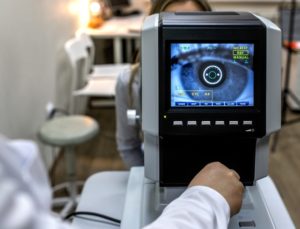
There are many fascinating elements to consider when discussing the human eye and the facts of how it works. Here are just a few bits of interesting information about the incredible natural machine that is the eye.
Heterochromia is a rare hereditary mutation that results in one person having two different colored eyes. It affects approximately 6 in every 1000 people. While it has no effect on a person’s ability to see, it results in a distinctive look. Some famous celebrities with heterochromia include Mila Kunis and Kate Bosworth.
However, David Bowie, who is sometimes said to have this, actually didn’t have truly heterochromatic eyes. His heterochromic appearance was down to a separate condition called anisocoria, with which one pupil becomes permanently dilated to a larger size than the other. This can result in distorted vision. He began to suffer from his anisocoria at the age of 15 after being punched in the face during an argument by a close friend.
Even without heterochromia, eye colour can sometimes still surprise people. Recessive genes can mean that children may not share an eye colour with either of their parents. Blue eyes are relatively new to humanity, as well, having evolved from a single mutation that occurred around 6000 to 10,000 years ago.
Blinking is also something we rarely think about, given how much time it takes up. Another human eye fact that not many people know is that we blink, on average, around 12 times a minute. It’s all part of a constant routine that the body does to keep the eyes active.
Even when you’re asleep, your eyes are still engaged in some serious movement. Rapid Eye Movement (REM) is only partly understood by medical science, but it appears to be absolutely critical to the human process of having dreams and for the cognitive part of our brain to process them. The vast majority of our dreams occur when REM is in progress during the last half of a long sleep.
New advances in Eyecare
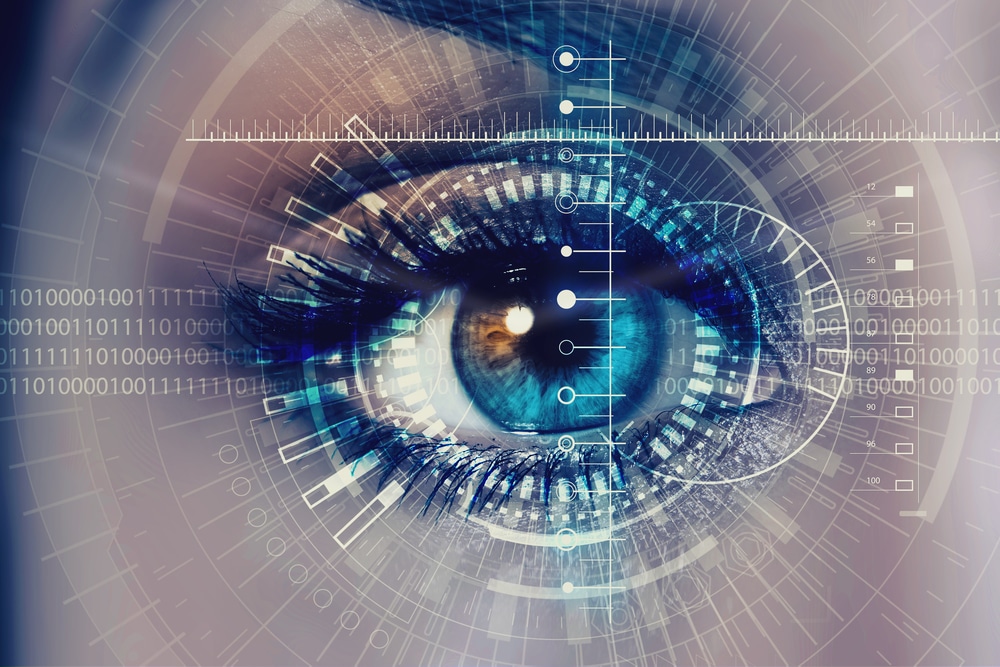
Medical science is constantly advancing the boundaries of what can be done to improve eyesight and heal damaged eyes.
One interesting innovation in eye care technology is the possibility of xenotransplantation between animals and humans. Although cornea transplants are relatively common, many countries are currently experiencing a shortage of donors. Detached corneas also have a short shelf-life before they become unusable. One solution is to use the cornea of a pig to substitute. Although the procedure is in its infancy, early recipients in China are already thriving.
What does the future hold for how we see? Bionic lens replacement technology may mean that our eyesight can be enhanced beyond the bounds of what’s previously been considered naturally possible. Bionic lens recipients may soon be able to focus on objects further away, for longer, with less eye strain. A bionic lens may also help to make cataracts and glaucoma a thing of the past. The transplanted lenses aren’t reliant on fluid retention in the same way as biological ones.
A glossary to laser eye surgery
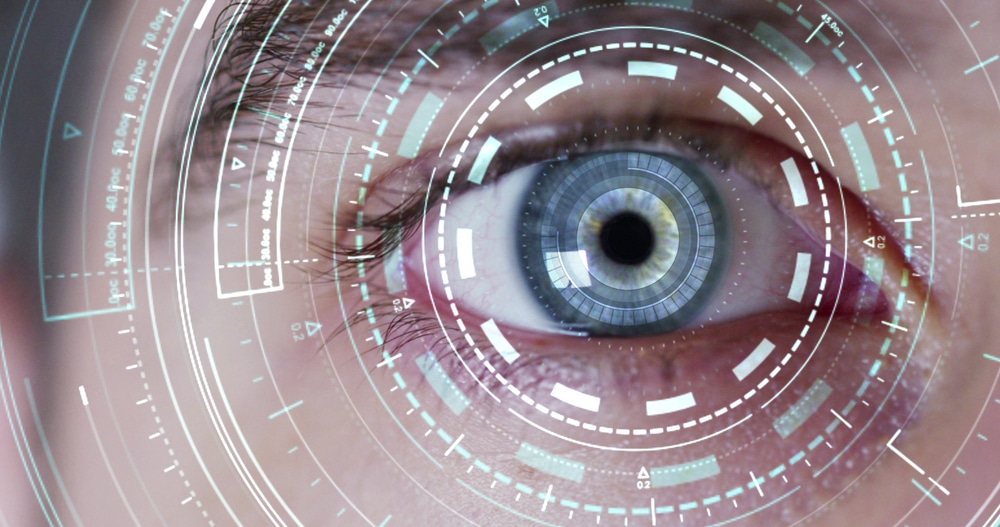
You’d be forgiven for thinking that, with all the lasers, precise equipment and state of the art technology used, laser eye surgery was a recent innovation. But the idea of it actually dates all the way back to 1896, when Dr Lendeer Jans Lans, an Ophthalmology teacher in the Netherlands published a paper on the theory of the possibility of reshaping the cornea by cutting it to improve vision.
Of course, technology at the time wasn’t sophisticated enough to take his musings any further, but almost 100 years later, his ideas were developed and made reality with the advent of the eximer laser – a device allowing very precise movements and cuts with no heating or burning of the tissue.
Laser eye surgery has come a long way since then and is now well established as a way to improve your vision without glasses or contact lenses, but the underlying principle of changing the way that light is focussed through your eye is just the same.
The shape of the cornea – the clear covering of the front of your eye – determines where the light that enters your eye is focussed, and for the best vision, it should be on the centre of the retina – the lining of the inside of your eye.
Glasses and contact lenses adjust the path of the light so that it hits this sweet spot, but laser eye surgery tackles the problem at the source; reshaping the cornea itself.
The different methods can be broadly split into two camps – laser surgery and lens surgery, and below you’ll find clarification on the difference between the two, as well as explaining in more detail some of the terms you’re likely to come across when researching the best type for you:
LASIK – laser-assisted in situ keratomileusis
Developed in the early 1990’s as an enhanced version of early types of laser eye surgery, a small blade or a laser is used to create a flap on the cornea – the clear surface that covers the front of your eye. This enables the surgeon to reshape and remove tissue from the underlying corneal layers so that when light enters the eye, it can be focussed better. When the surgeon has finished, they close the flap and allow it to heal naturally.
LASEK – laser epithelial keratomileusis
This method of laser eye surgery is more suited if your cornea is too thin or flat for LASIK surgery, as the instrument and method used to create the flap on the cornea is different. In this case, the uppermost layers of the cornea are removed first, before the flap is made. After surgery, the patient must wear a special contact lens called a bandage lens for a few days until the cornea heals.
PRK – Photorefractive keratectomy
This was the first type of laser eye surgery developed, in the late 1980s. PRK is again a useful option if the cornea is too thin for successful LASIK surgery. Instead of a flap to allow access to the inner layers of the cornea, the outer layers are removed and discarded. This can mean longer healing times than other methods, but studies have shown that long-term, the outcomes are comparable. As with LASEK, a bandage contact lens is worn for a few days after treatment to protect the eye during the initial healing period.
SMILE – Small Incision Lenticule Extraction
One of the newest forms of laser eye surgery, this method suits people who may previously have been told they were not eligible due to very high prescription (short-sightedness in particular), dry eyes or contact lens intolerance. SMILE has been likened to keyhole surgery, which means that it is less invasive than other methods. A small hole is made in the cornea, and the laser gets to work through that, rather than directly on the exposed cornea, giving faster improvements in vision and shorter healing times.
Wavefront technology
This refers to the way in which laser eye surgeons determine precisely where to direct the laser that is reshaping the cornea. The front of the eye is digitally mapped in 3D hundreds of times per second to ensure that the most effective reshaping takes place, taking into account any tiny irregularities across the whole eye. This advanced technology means that laser eye surgery is now more precise than ever, and side effects in long-term vision are greatly reduced.
RLE – Refractive Lens Exchange
As the cornea directs the light that enters your eye, the lens (situated inside your eye) acts just like a spectacle or contact lens – focussing this light to create an image. When you need glasses, this lens is not focussing the light correctly, and glasses or contact lenses do the corrective work instead. WIth RLE, the lens inside your eye is replaced with a synthetic one. Cataract surgery works in the same way, but in that case, the lens is replaced because it has become cloudy, usually as a normal result of ageing. RLE can be a great option if you are not suitable for laser-based methods of corrective surgery, and can also eliminate the need for separate reading glasses, as a multi-focal lens can be used.
ICL – Implantable Contact Lenses
A tailor-made lens, similar to a contact lens (but much smaller) is implanted into the eye, without the natural lens being removed. Very high prescriptions can be corrected this way if laser surgery is not a suitable option. Lenses with UV protection are used, giving extra defence against the harmful effects of UV light on the eye.
We hope that clears up a lot of questions and makes the process of eye surgery less mysterious. Remember that each person will have different requirements, and some methods are more suitable than others depending on your individual prescription. Your laser eye surgeon will be able to advise you on all the options based on your specific prescription and eye health.

